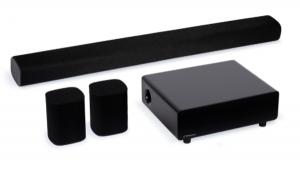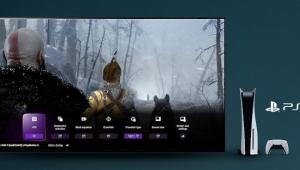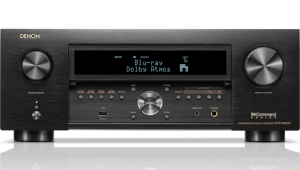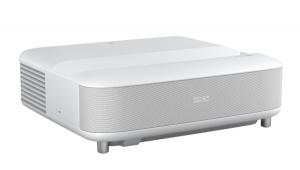Pioneer announces Andrew Jones-designed soundbar for $399

Pioneer just announced what I expect will become a true benchmark in the audio biz: a $399 soundbar designed and voiced by famed speaker engineer Andrew Jones. I heard a prototype of this soundbar way back on the last day of February, but had agreed not to discuss it until the official announcement.
Of course, the epidemic of bad celeb-endorsed headphones proves that having a famous name attached to a product is no guarantee of quality. But the new SP-SB23W soundbar is radically different from other <$500 soundbars we've seen.
First, it has a composite wood (MDF, I assume) cabinet, which should vibrate a lot less than the relatively flimsy plastic enclosures used for most soundbars. Second, it uses 1-inch tweeters and 3-inch midrange drivers with designs borrowed from Jones's affordable minispeakers, widely regarded as radically better than anything else in their price range.
There's more. Each of the bar's six drivers has its own 28-watt Class D amp, with a digital signal processor doing EQ and crossover filtering for each driver. These active crossovers deliver far better fidelity than the ultra-simplified passive crossovers used on almost all other soundbars, with lower distortion, higher maximum usable output, better off-axis performance, and less tonal coloration.
Back in February, Jones told me that the digital crossover between the tweeter and the midrange driver closest to it has a 6th order (36 dB/octave) electrical slope. In comparison, most soundbars I've disassembled have just a single capacitor in series with the tweeter, with no filtering on the midrange drivers-thus, a 1st order (6 dB/octave) slope on the tweeter and nothing on the midrange. The other midrange driver in each channel is low-passed in the 400-500 Hz range, so it reinforces the low frequencies without interfering with the primary midrange. (For a very non-technical explainer on crossover design, click here.)
There's nothing obviously special about the wireless subwoofer-it's a 6.5-incher powered by a 50-watt amp. But the fact that it was designed and tuned by one of the industry's most experienced speaker designers, rather than by an ODM interested only in making it as cheaply as possible, suggests it might sound better than your average soundbar subwoofer. (Which, granted, isn't hard.)
The features list isn't as jazzy as you'll find with the latest models from the likes of Samsung, Sony, and Vizio. There's no HDMI, no DTS Master HD or Dolby TrueHD lossless audio, and no crosstalk cancellation or other pseudo-surround processing. It does have analog and digital inputs (with Dolby Digital processing on the digital inputs), plus movie, music, and dialogue modes. Bluetooth is built in for easy streaming from smartphones, tablets, and laptops, and the unit can also learn the volume and power commands from your TV remote.
Jones described the system pretty well when he demoed it for me: "It goes as loud as a regular stereo system and sounds like a regular stereo system."
Having tested more than 60 soundbars, I was amazed and delighted to hear … well, what I couldn't hear. I couldn't hear the SP-SB23W's cabinet vibrating. I couldn't hear the negative effects of the crossover. I couldn't hear the subwoofer's port chuffing. It just didn't sound like a soundbar. It sounded like a good desktop speaker system, with clear and natural voice reproduction; tight, well-defined (although not especially deep) bass; and smooth, extended treble. A huge improvement over all but the very best soundbars we've heard.
Sadly, though, the SP-SB23W won't be available until fall.
- Log in or register to post comments




















































